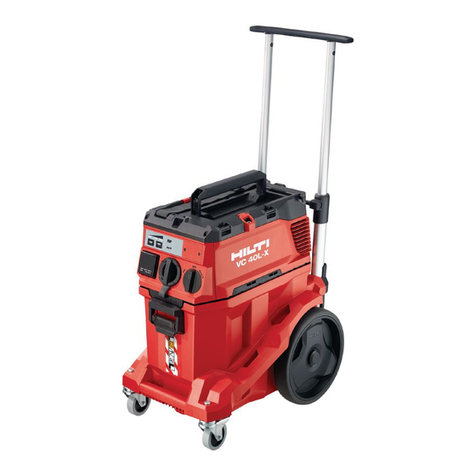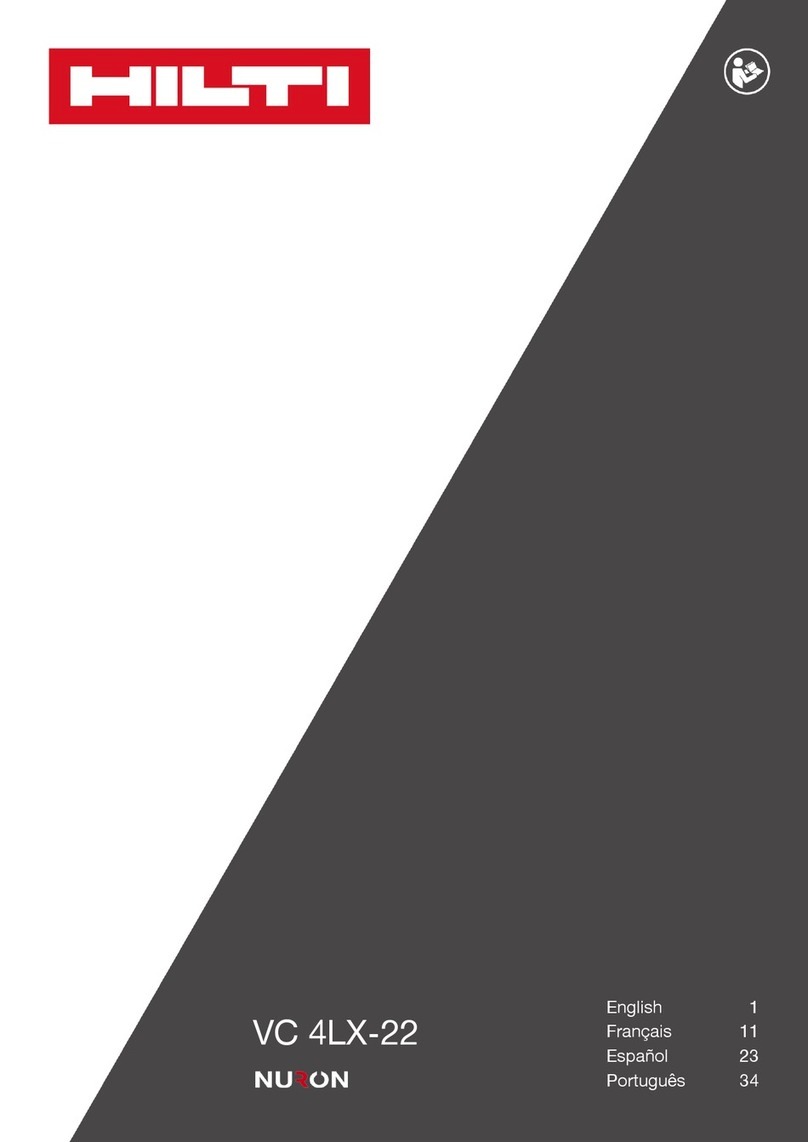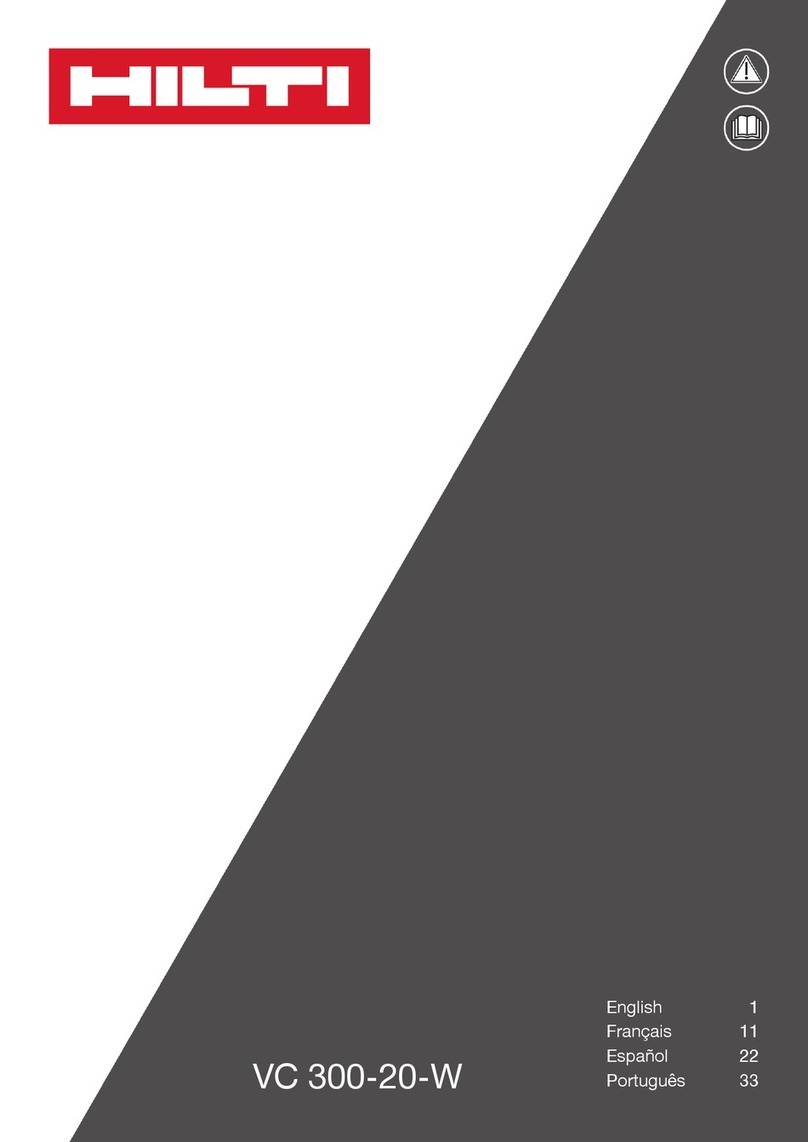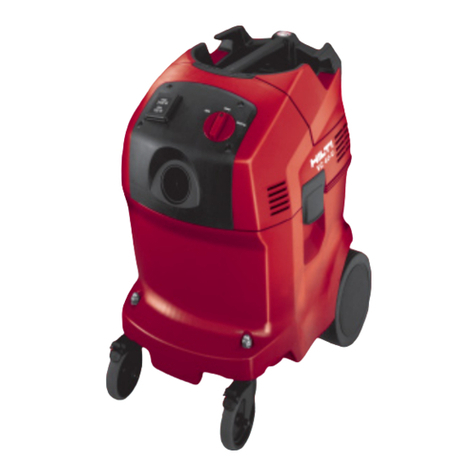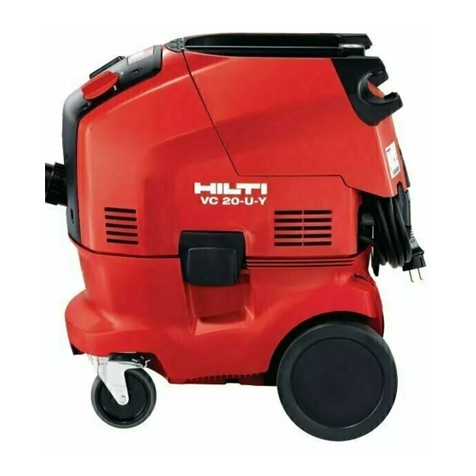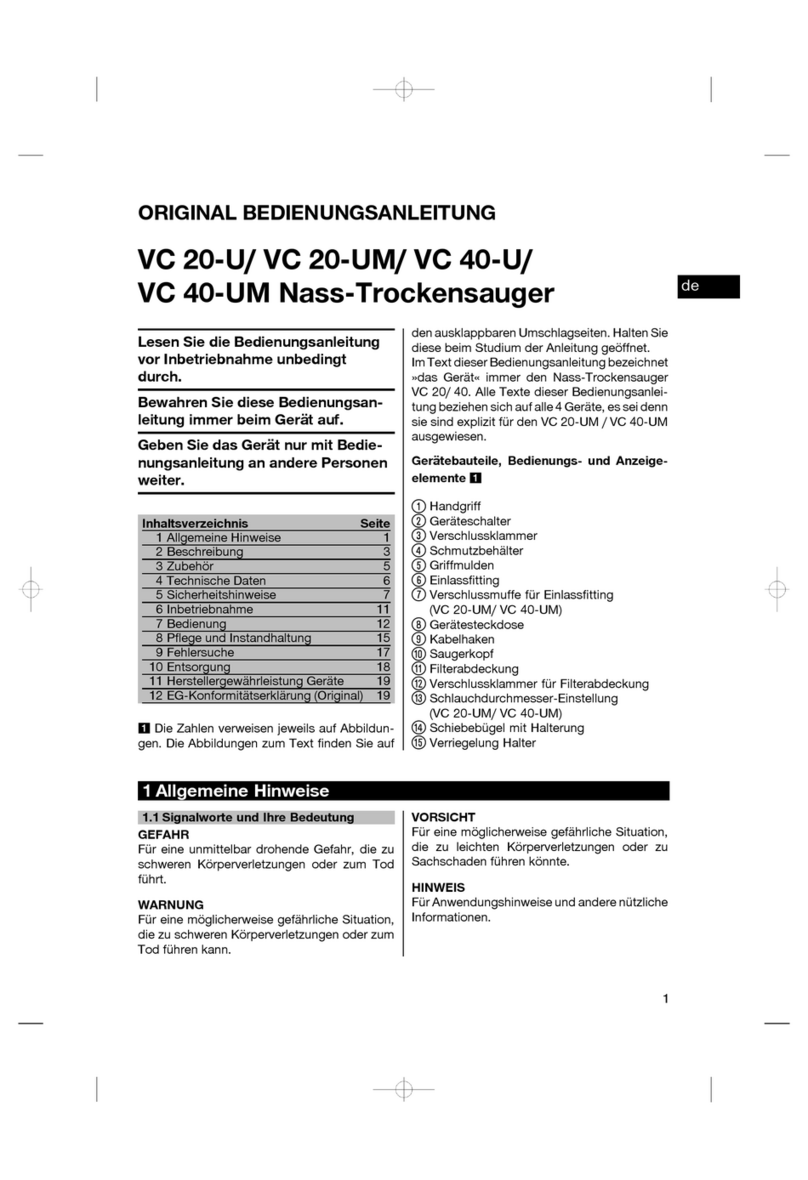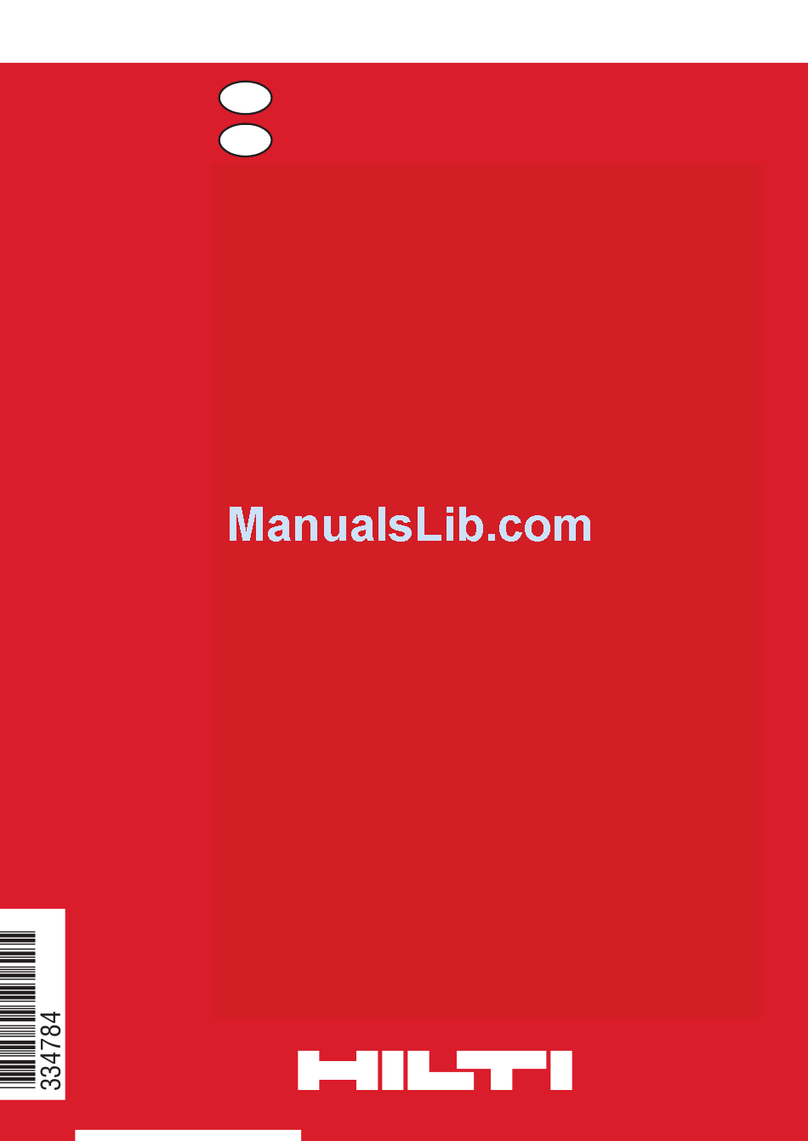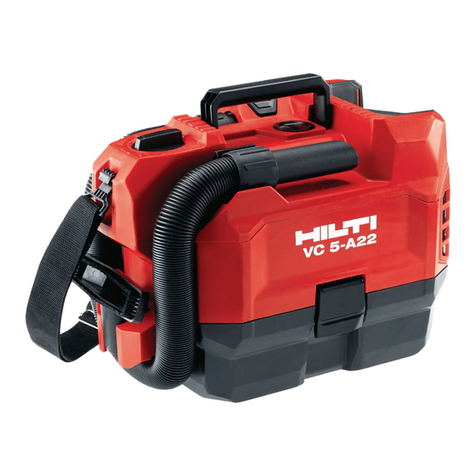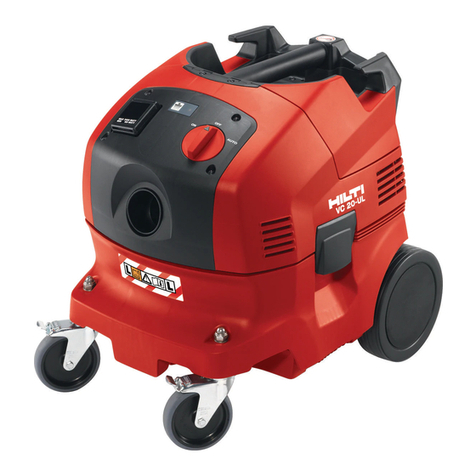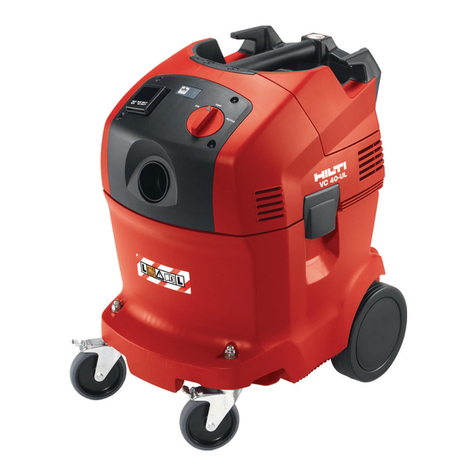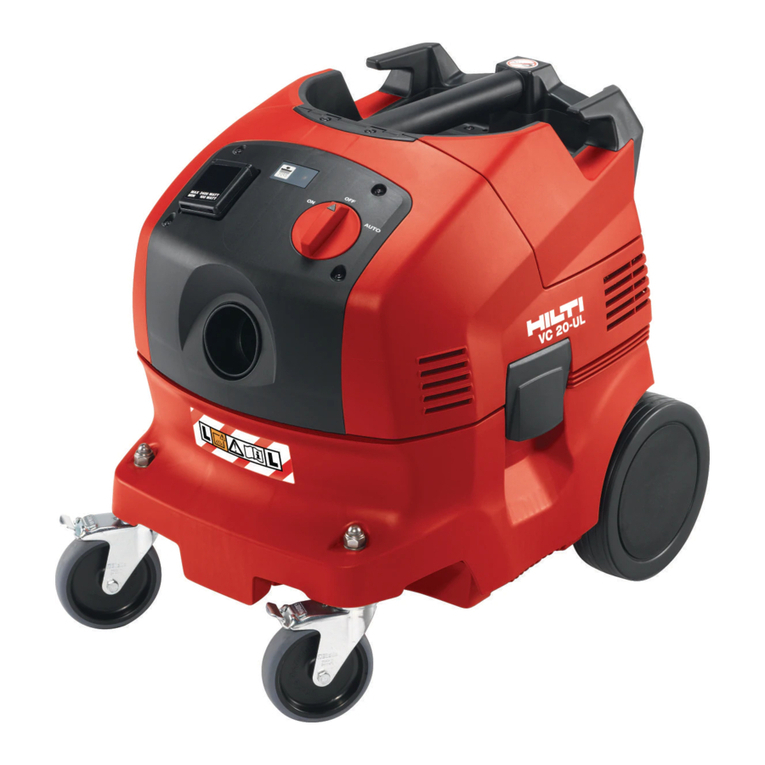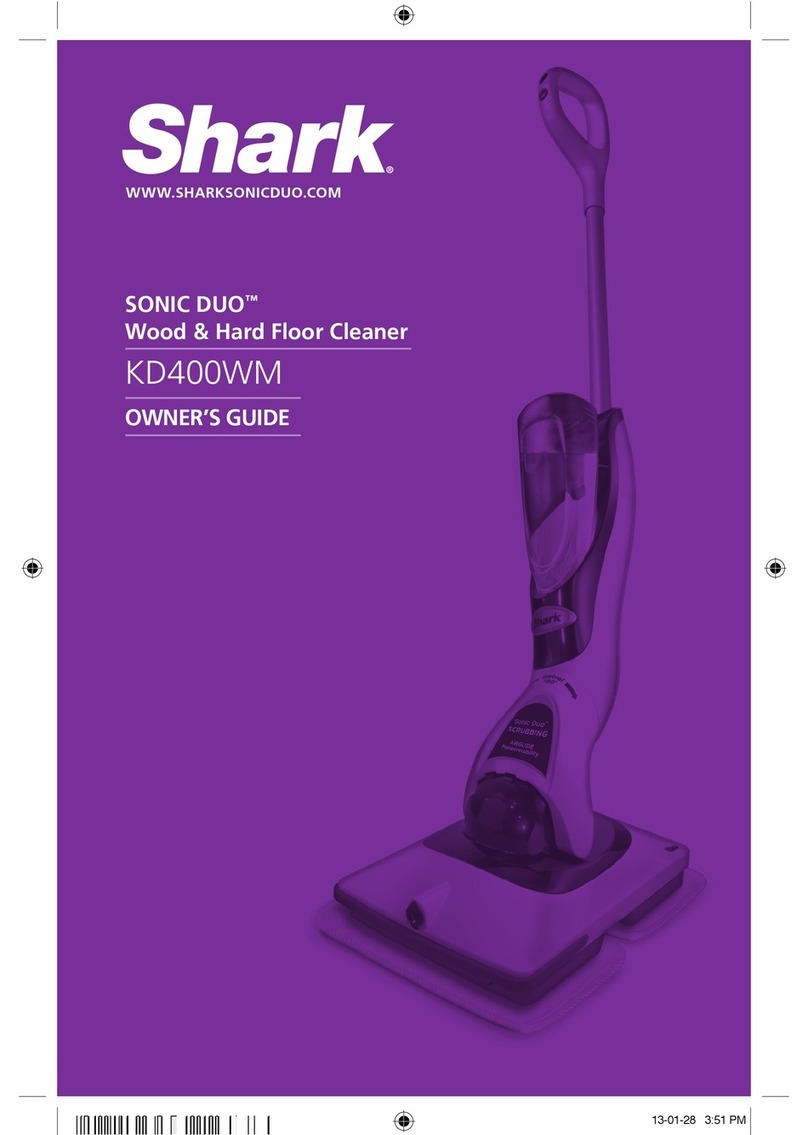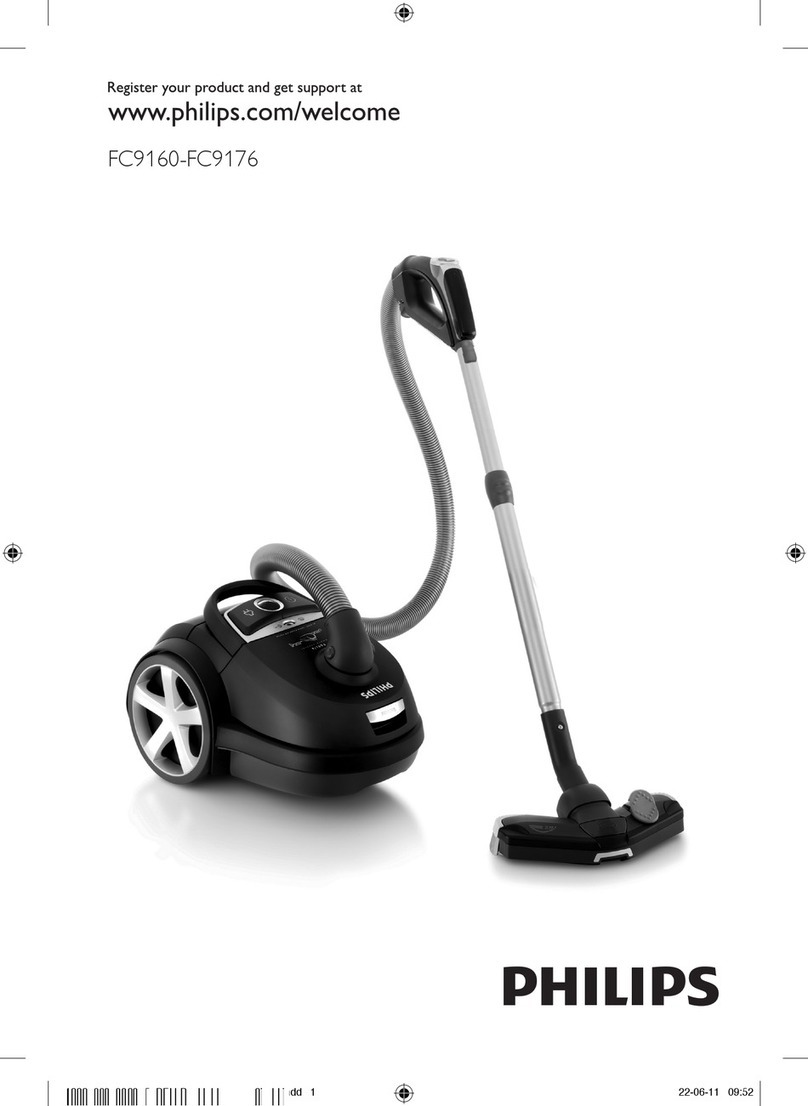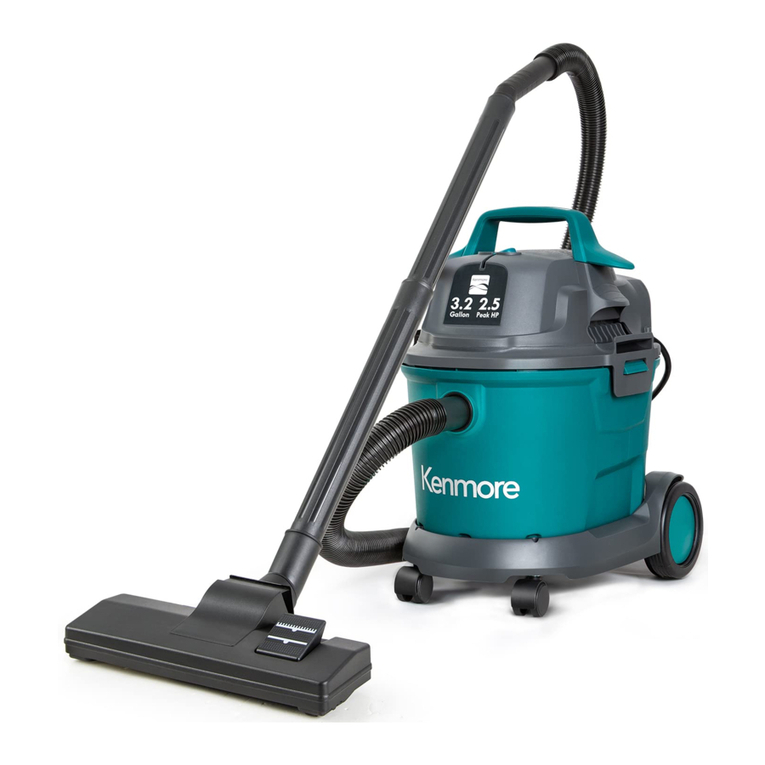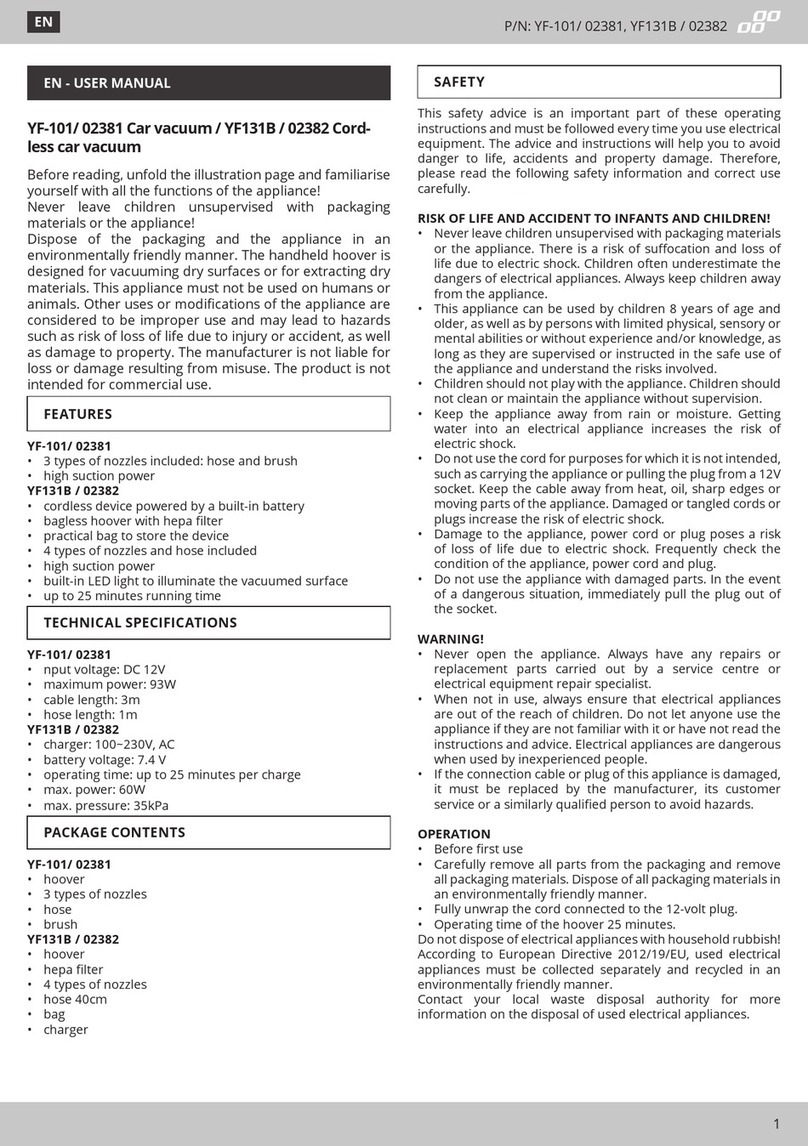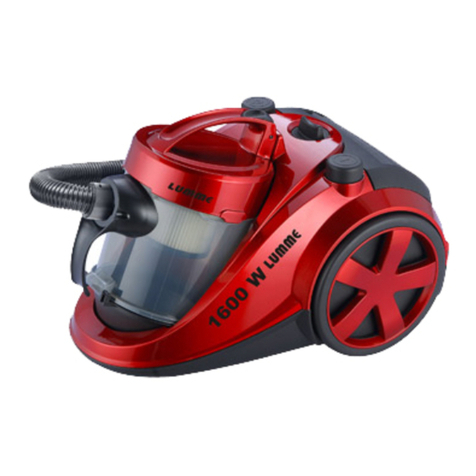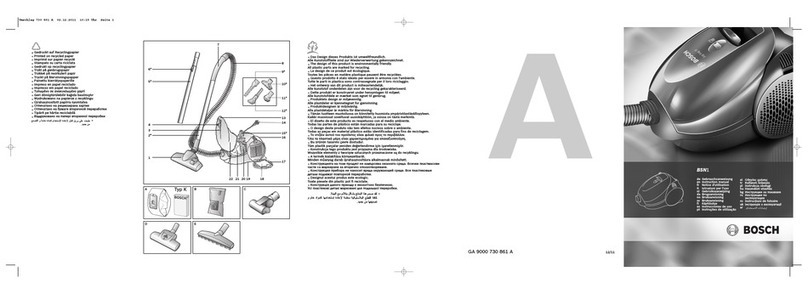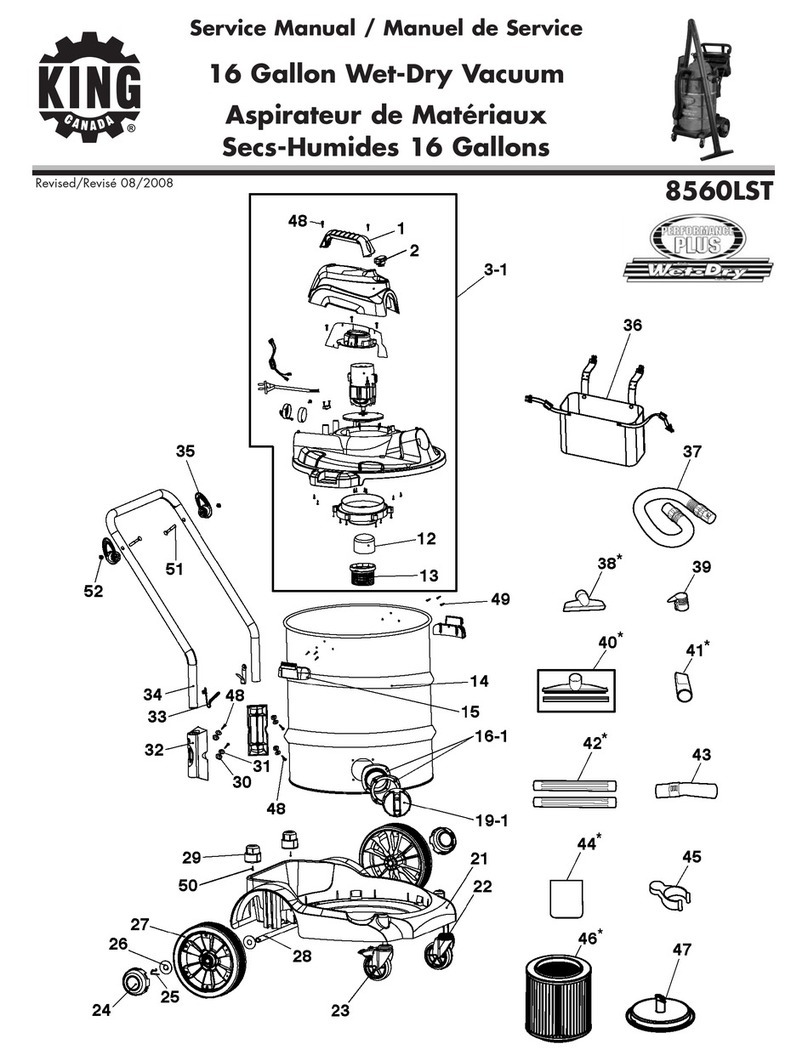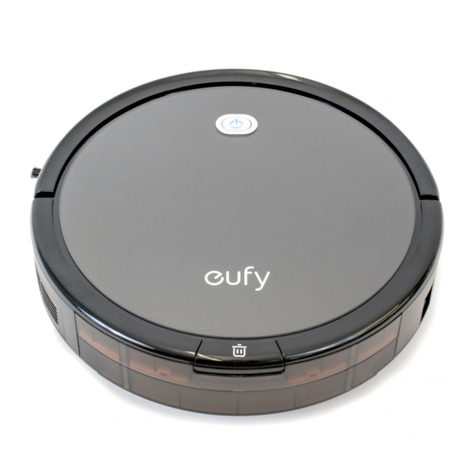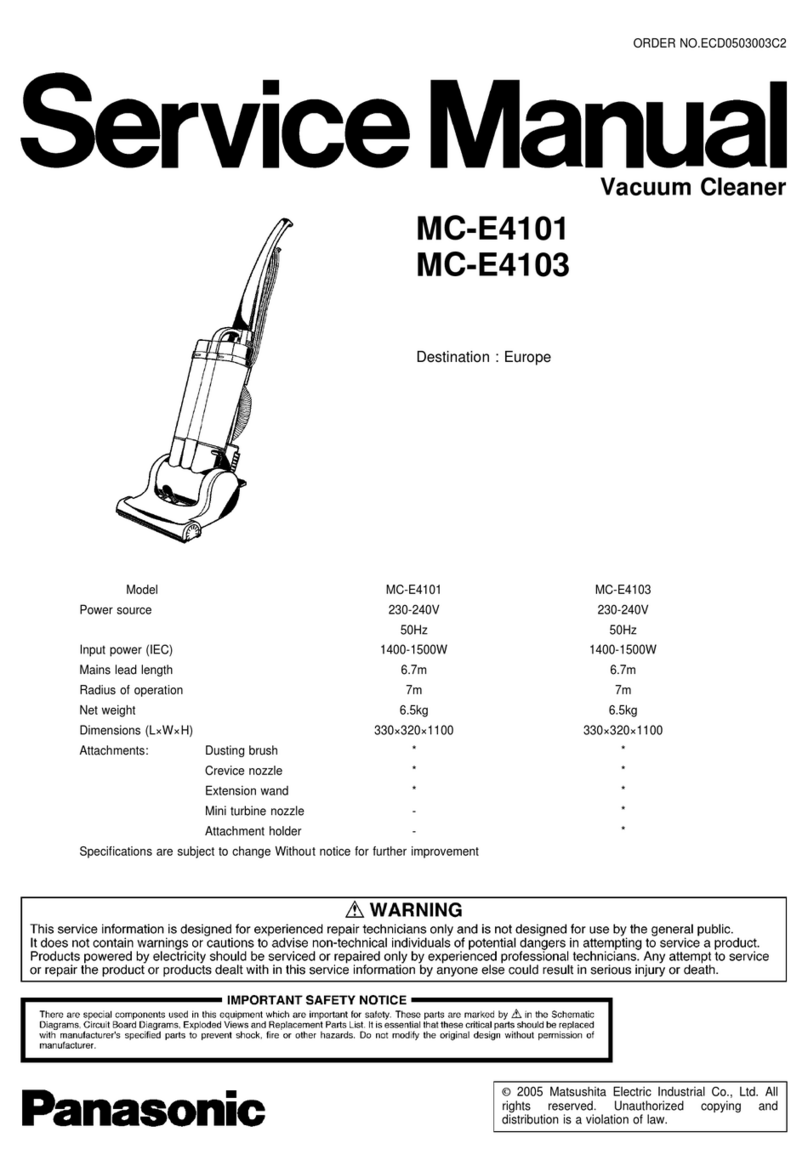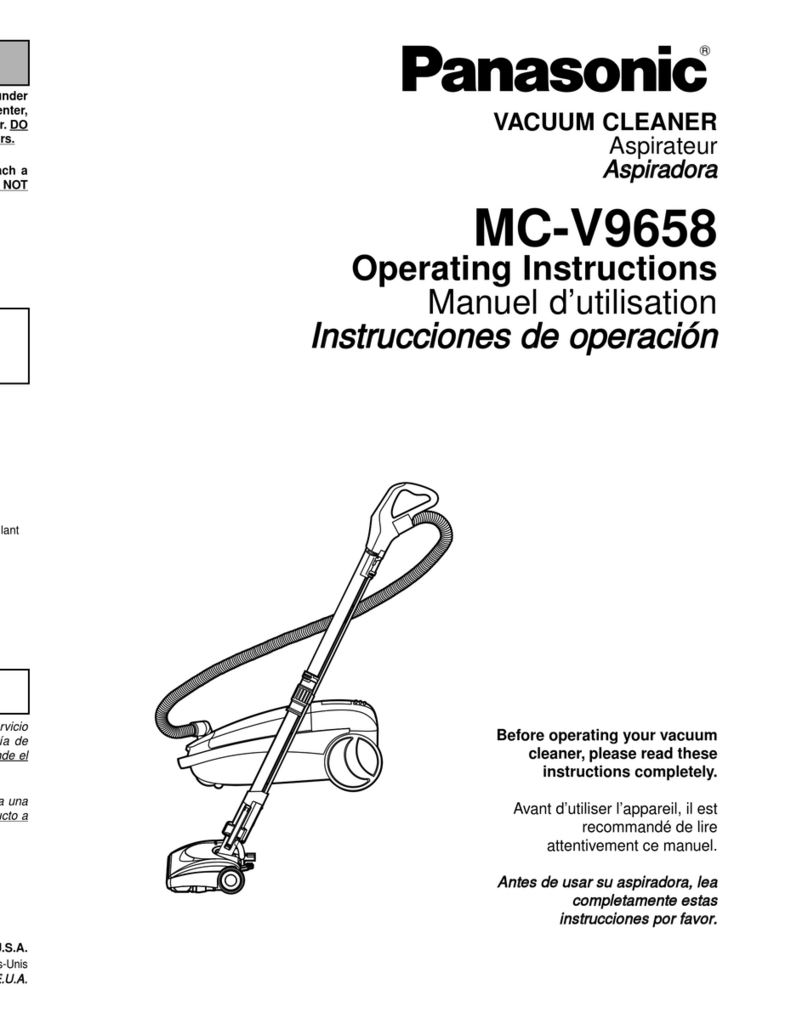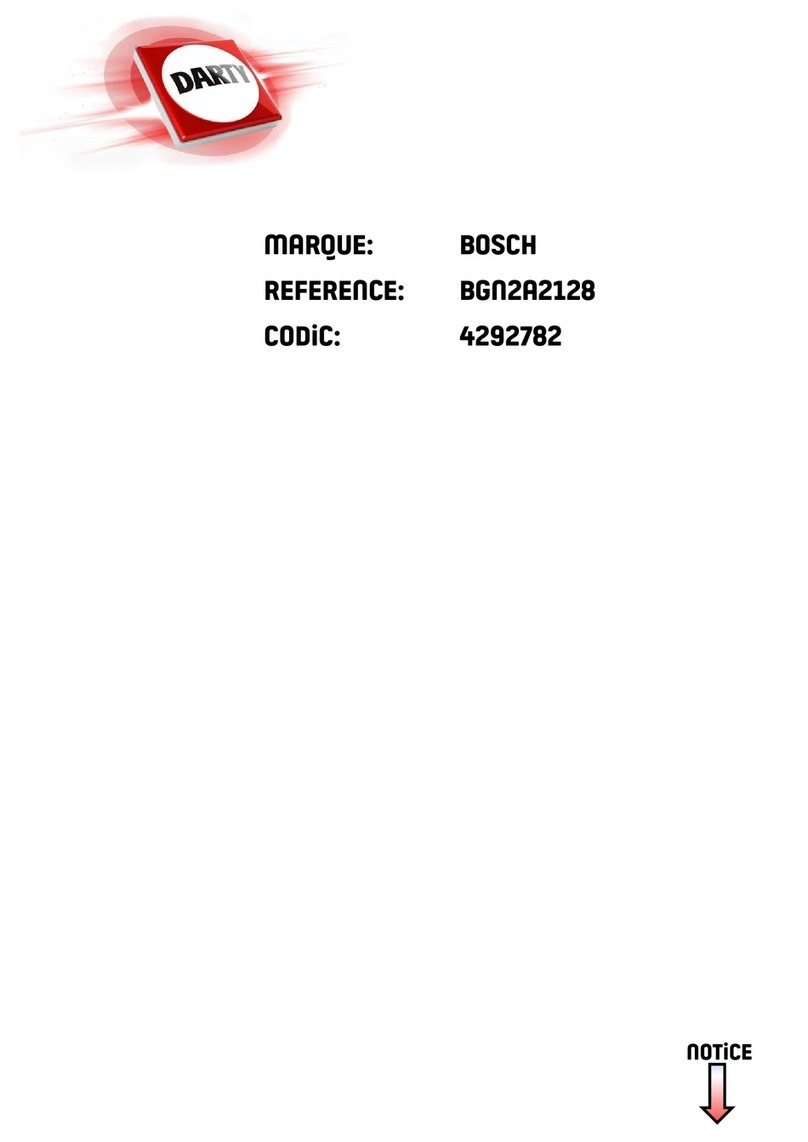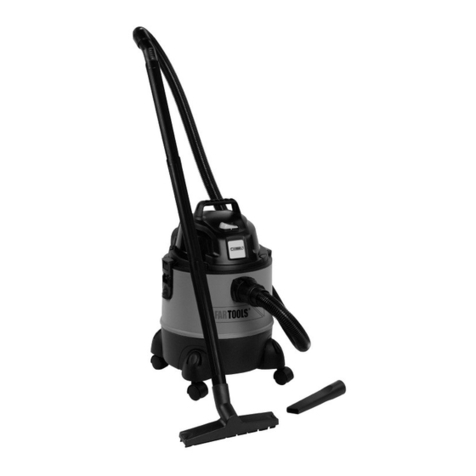
*2330316* 2330316 English 3
2.2 Additional safety instructions for vacuum cleaners
Work area safety
▶Keep bystanders, children and visitors away while operating the power tool. Distractions may cause you
to lose control of the tool.
Personal safety
▶Stay alert, watch what you are doing and use common sense when operating a power tool. Do not use
a power tool while you are tired or under the influence of drugs, alcohol or medication. A moment of
inattention while operating the power tool may result in serious personal injury.
▶Wear your personal protective equipment and always wear protective glasses. Depending on the type of
power tool you are using and its purpose, wearing safety equipment such as a dust mask, slip-resistant
safety shoes, a hard hat or hearing protection will reduce the risk of injury.
▶Do not use the vacuum cleaner in heavily dust-laden ambient air.
▶Misuse can result in liquid escaping from the battery. Avoid contact with the liquid. Liquid escaping from
the battery can cause skin irritation or burns. If contact occurs, rinse off with water. In the event of the
liquid coming into contact with the eyes, rinse the eyes with plenty of water and consult a doctor.
Using and handling the power tool
▶Store power tools out of reach of children when not in use. Do not allow persons who are not familiar
with the tool or these instructions to operate it. Power tools are dangerous in the hands of inexperienced
persons.
▶Take good care of the power tool. Check that moving parts operate satisfactorily and do not jam, and
make sure that no parts are broken or damaged in such a way that the power tool might no longer
function correctly. Have damaged parts repaired before using the tool. Many accidents are caused by
poorly maintained power tools.
▶Use power tools, accessories, insert tools, etc. in accordance with these instructions. Take the working
conditions and the work to be performed into account. Use of power tools for applications other than
those intended can result in hazardous situations.
▶Use the right power tool for the job. Do not use the power tool for purposes for which it was not intended.
Use it only as directed and when in faultless condition.
▶Operate the vacuum cleaner only with the filter installed.
▶Avoid unintentional starting. Switch the power tool off before inserting the battery and before lifting or
transporting the power tool. Never carry the power tool with your finger on the on/off switch. Always
remove the battery when the power tool is not in use, before maintenance, before changing accessory
tools and in preparation for and throughout transport.
▶Do not use the vacuum cleaner as a seat or as a step.
▶When fitting the suction head on to the vacuum cleaner, take care to avoid pinching your fingers.
Service
▶Have the power tool repaired only by a qualified specialist using only genuine Hilti spare parts. The safety
of the power tool can thus be maintained.
2.3 The material vacuumed up
▶Do not use the vacuum cleaner to vacuum up hazardous dusts of a dust class higher than the
dust class for which the vacuum cleaner is rated. Do not use the vacuum cleaner to vacuum up
flammable and/or explosive dusts (e.g. magnesium or aluminum dust). Do not use the vacuum
cleaner to vacuum up materials hotter than 60 °C (140 °F) (e.g. glowing cigarettes, hot ash).
▶Before starting work, always check the hazard class of harmful dust that can be produced in working
operations. Materials harmful to health such as asbestos and lead are explicitly not included in the
intended use of the product and working with them is not permitted → page 5. If you work with materials
containing lead or asbestos nevertheless, the manufacturer's warranty for your product is voided.
▶Dust produced by grinding, sanding, cutting and drilling can contain dangerous chemicals. Some
examples are: lead or lead-based paints; brick, concrete and other masonry products, natural stone
and other products containing quartz; certain types of wood, such as oak, beech and chemically
treated wood; asbestos or materials that contain asbestos. Determine the exposure of the operator and
bystanders by means of the hazard classification of the materials to be worked. Implement the necessary
measures to restrict exposure to a safe level, for example by the use of a dust collection system or by
the wearing of suitable respiratory protection. The general measures for reducing exposure include:
▶working in an area that is well ventilated,
▶avoidance of prolonged contact with dust,


